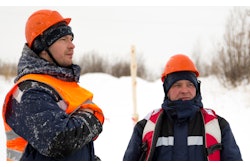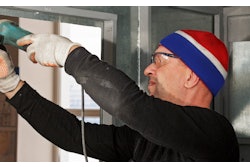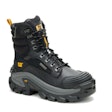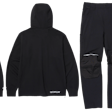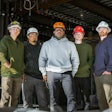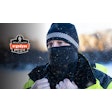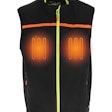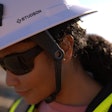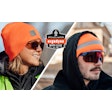
Vests offer value on a construction site in terms of providing warmth by keeping the core warm, acting as an added garment to wear under a jacket, and can be insulated and waterproof. This type of workwear gear can you transition from cold to warmer weather. They allow freedom of movement for a full range of motion on the job, enabling the arms to be free while still providing warmth to the core.
Plus, their pockets offer additional storage space.
Sites such as RefrigiWear, StyleGOTO, and Bliss Tulle illustrate the benefits of vests and their options.
When to Wear Vests on Construction Sites
A vest can be worn as an outer layer, liner, or singular layer under clothing and helps keep the body temperature regulated without adding too much weight or bulk.
In colder temperatures, vests can take the place of light- to mid-weight jackets without sacrificing warmth and serve as an appropriate mid-layer between a long-sleeved base layer and an outer jacket.
Vests provide a solution in milder temperatures where it can be too warm to wear a jacket, but too cold to wear just a base layer. Look for a vest made of polyester or poly/cotton blends, is lightly insulated and can be worn as a mid-layer under a jacket or coat. The material is breathable and lightweight, ideal for warmer weather.
They work to protect the body’s core in that when the core temperature drops, the body reduces blood flow to the extremities and increases blood flow to the core to protect the organs. By keeping the core insulated and warm, blood flow remains constant to the extremities, keeping them warmer and helps to avoid muscle strain and cramps and prevents heat exhaustion.
The vest is worn over clothes, trapping the air between the vest and the layers of clothes.
Vests are available in a wide range of materials with different insulation levels and features such as waterproof pockets, and detachable hoods, among others.
Types of Construction Vests
Choices abound when it comes to options for construction vests. Choose a vest that provides a comfortable fit without sagging as excess fabric will cause bunching.
A down vest is made from feathers serving as insulation against the cold. They are warmer because they trap more air than fleece, but are as breathable or flexible. They offer a snug fit with an adjustable elastic band around the hood.
A fleece vest is crafted from synthetic fibers to create a soft blanket-like texture. Its insulating properties retain heat. They keep the person wearing it cooler when the weather warms up. A lightweight fleece may be appropriate for milder temperatures as well as physically demanding activities that would cause more sweat. It is favored for its weight and breathability, but also retains more water in rainy or snowy conditions.
In that case, a water-repellent or waterproof exterior such as a softshell or puffer vest with wind-tight/water-repellent polyester shell might be preferable.
A puffer vest – which gets its name from the stitched sections filled with insulation to give a ‘puffy’ look – uses down, but most use a synthetic insulation that can be lighter than down and provide the same warmth.
Puffer vests provide enough insulation to keep warm. Due to their breathable fill and sleeveless fit, they also prevent overheating while in motion. Their synthetic insulation doesn’t clump or break apart after washing as much as down and makes a better work jacket. A quilted vest is typically filled with synthetic fibers and cotton; some have a polyester filling, making them warmer than other vests. The quilted vest is considered the most insulating and thickest and are best worn over clothing, not under them.
Most vests offer the added benefit of keeping dry as well as warm in inclement weather as vests are typically made from a more waterproof material than jackets, sweatshirts, and sweatsuits.
That is due in part to vests being made from cotton or polyester, which do not absorb water very easily. The waterproof material also wicks moisture away from the body more effectively than other fabrics, creating added comfort and safety. Most vests are constructed of a double layer of fabric, with the outer layer typically being waterproof synthetic fiber and the interior usually cotton or polyester. That offers two layers of protection to keep moisture from spreading onto the wearer’s skin.


